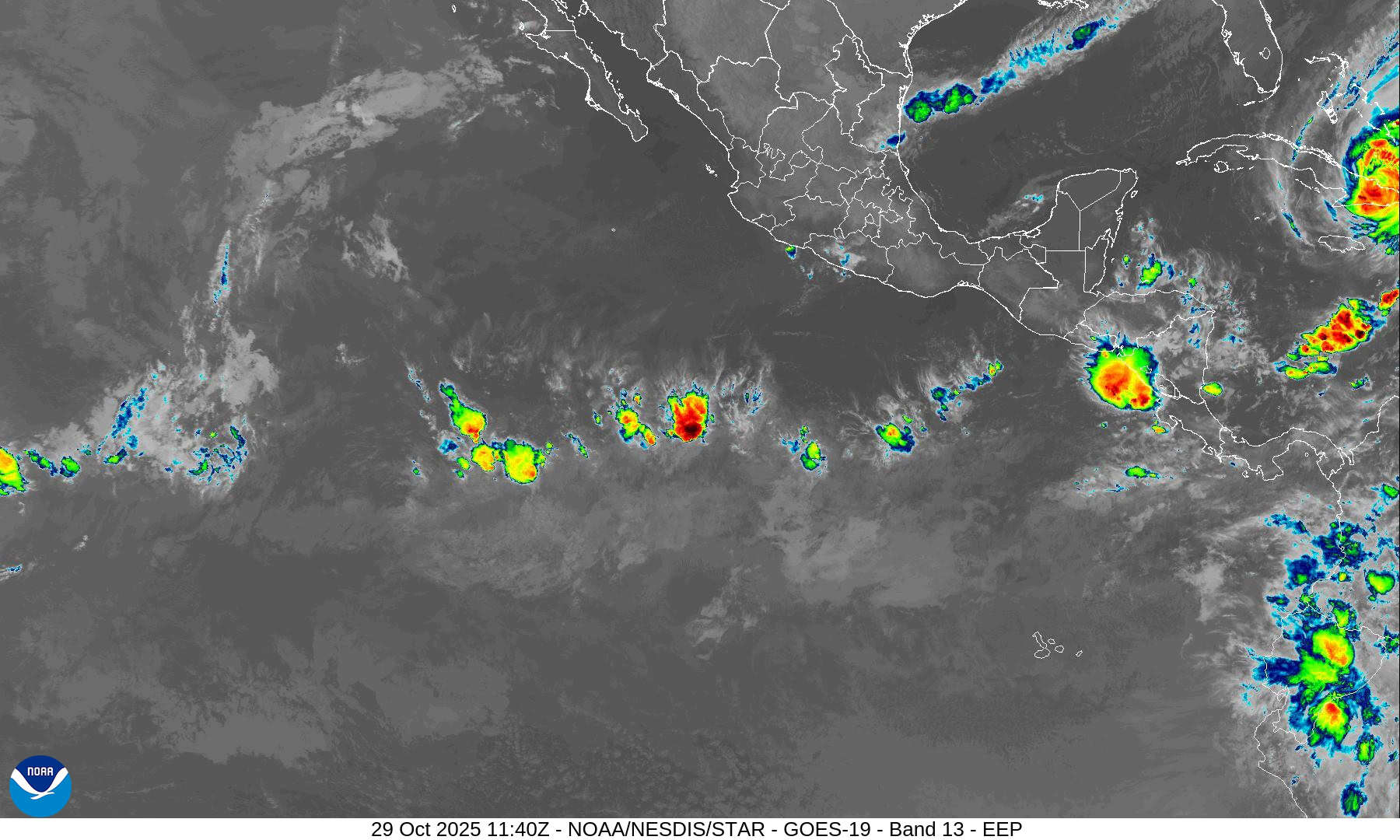Current Snapshot
For all the latest updates visit: DisasterAWARE
By PDC’s Senior Weather
Specialist Glenn James

The Pacific Disaster Center’s (PDC Global) Tuesday, May 21, 2024, Tropical Cyclone Activity Report…for the Pacific Ocean, the Indian Ocean, and adjacent Seas
Current Tropical Cyclones:
Tropical Cyclone 24S (Ialy) is located approximately 256 NM northeast of Dar Es Salaam, Tanzania
Northeast Pacific Ocean:
Tropical cyclone formation is not expected during the next 7 days.
Central North Pacific:
The central North Pacific hurricane season officially ended on November 30, 2023. Routine issuance of the Tropical Weather Outlook will resume on June 1, 2024. During the off-season, Special Tropical Weather Outlooks will be issued as conditions warrant.
The central Pacific basin had a near-normal season with four tropical systems traversing the basin.
Hurricane Dora, a category-4 storm, passed south of Hawaii in early August, marking the first major hurricane in the central Pacific basin since 2020. The strong gradient between a high pressure system to the north and Dora to the south was a contributing factor to the wind-driven, fast-moving wildfires in Hawaii.
Western Pacific, Indian Ocean and adjacent Seas
South Indian Ocean
Tropical Cyclone 24S (Ialy)
According to the JTWC Warning number 12A…sustained winds were 45 knots, with gusts to near 55 knots
Animated multi-spectral satellite imagery depicts tropical cyclone 24S (Ialy) tracking west-northwestward off of the coast of Kenya into an area of increasing northeasterly vertical wind shear, which has caused the eye that developed over the last 12 hours to become disorganized and cloud-filled over the past few hours.
A microwave image depicts convective banding wrapping along the southern and western peripheries, with an opening to the northeast of the circulation center. An earlier image depicts a distinct low-level circulation center with associated wind speeds reaching 55 knots.
TC 24S is forecast to curve to the north-northwest over the next twelve hours as the system weakens under persistent vertical wind shear and comes under the steering influence of strong southwesterly low-level flow paralleling the eastern coast of the African continent.
As the system continues to erode, it will continue tracking in a northeasterly direction and dissipate by 24 hours. Near-term movement a bit farther to the west is possible if the vortex resists increasing shear for longer than anticipated.
Western Pacific Ocean
Invest 93W
>>> There’s an area of disturbed weather being referred to as Invest 93W…which is located approximately 238 NM southeast of Palau.
Animated enhanced infrared satellite imagery depict a broad area of turning moving into a favorable environment for development, with conducive sea surface temperatures and low vertical wind shear (10-15 knots).
Moderate to strong poleward outflow aloft, enhanced by the flow associated with an upper-level trough to the west, will also support the system as it moves into the Philippine Sea over the next few days.
Global deterministic and ensemble models are in good agreement that 93W will track northwestward with slight intensification over the next 24 hours, followed by steady intensification thereafter.
Maximum sustained surface winds are estimated at 13 to 17 knots.
The potential for the development of a significant tropical cyclone within the next 24 hours is low.
South Indian Ocean
Invest 99B
>>> There’s an area of disturbed weather being referred to as Invest 99B…which is located approximately 132 NM southeast of Chennai, India
Animated enhanced infrared satellite imagery depicts a highly broad circulation area offshore of Chennai, India with spotty convection. A mid-level circulation is observed displaced 250 to 300 NM east of the surface circulation, indicating a disorganized system.
A satellite pass shows a large elliptical area of turning with an asymmetric wind field, consisting of light easterlies to the north and a monsoonal westerly wind burst south of Sri Lanka with 25-30 knot winds that are not directly associated with the circulation at this time.
Current environmental analysis shows favorable conditions with weak (<15 knots) vertical wind shear and warm sea surface temperatures.
Global models are in good agreement that 99B will get ushered eastward by the westerly wind burst and then hook northward over the eastern Bay of Bengal over the next 72 hours, gradually consolidating into a monsoon depression.
Maximum sustained surface winds are estimated at 15 to 18 knots.
The potential for the development of a significant tropical cyclone within the next 24 hours is low.












